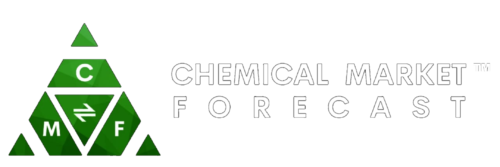Plant Chemicals are classified as substances used as growth enhancers within the agricultural domain. The use of these products accelerates the growth of the plant and consecutively protects the same from pests. Some of the key segments within this market include Fertilizers as well as Pesticides. Nitrogen Fertilizers and Phosphorous Fertilizers account for a major segment of the Fertilizers Industry. Urea is one of the key raw materials used in the developed of Nitrogen Fertilizers. The US nitrogen fertilizers market is dominated by Ammonia as a raw material.
The elements promote plant growth and hereafter reduce crop losses. Agrochemicals are produced via the use of large-scale production processes. They are very often classified as specialty chemicals since they are distinguished based on functionality.
Plant Chemicals are also known as agrochemicals account or a key segment of the chemical Industry. The rise in the number of consumers for the agricultural domain is one of the key drivers for this market. The expanding value chain owing to the increased number of start-ups within the Food and Beverages domain is also expected to accelerate the market growth. Synthesized plant growth hormones also account for a key segment of this market.
Historic Overview of for Plant Chemicals:
Roughly, 4500 years ago Sumerians made use of sulfur compounds as insecticides. The chemical was used to reduce the subsequent risk of pest-related famine.
Mercury and Arsenic based compounds were used roughly 3200 years ago in order to control body lice. Chemical fertilizers were first utilized in the 1960s towards the inception of the green revolution. Mineral Fertilizers like Nitrogen, Phosphorous, and Potassium were used within these fertilizers to promote cultivation. Farming practices such as irrigation were also utilized during this period.
Ecological Aspects for Plant Chemicals:
Plant Chemicals have a high level of toxicity. Therefore, farmers and cultivators have been trying to move towards sustainable farming practices. The health risks associated with accidental spills and the impact of these chemical substances on the soil are factors that restrict the market growth. In some countries, the use of agrochemicals is highly regulated. Government-issued permits are hereafter required for the purchase and approval of agrochemicals.
According to government reforms, proper labeling and emergency clean-up procedures are to be followed by the end-users of this product.
Market Dynamics for Agrochemicals:
The growth in agribusiness within regional segments like the APAC contributes to the growth of this market. The surge in population density within this region is one of the key factors that drive the market expansion. Another factor that drives the consumption of agrochemicals is the burgeoning demand across the value chain for the agricultural sector. The rise in purchasing power of consumers across the global markets is responsible for the surge in demand.
The evolution of synthetic crop management practices is expected to accommodate the rise in food demand across the globe. It is estimated that roughly 40% of the crop harvested globally is lost due to plant infestation. The use of these chemicals also reduces crop losses. This in turn ensures the optimal usage of the capital invested.
Although the rise in adoption of sustainable practices that support a circular economy is expected to restrict the market trends. The increased health awareness amongst the population is expected to support the adoption of organic farming practices. The use of practices like Integrated Farm Management is anticipated to increase the crop yield within the agriculture industry. The method used entails the use of both organic as well as synthetic crop enhancers to promote productivity.
The consumers for the organic crop market have been increasing owing to the surge in awareness about the health-related risks of pesticide residue. Crop exporters globally are trying to meet minimum residue levels to support the trade-based demand.
The growth in consumption of cereals and grains is another factor that is expected to drive the market expansion. According to a study, it is seen that the production of cereal crops is forecasted to expand by a value of 60% between the years 2000 and 2050. Plant Chemicals are increasingly used within the cereals and grains segment to avoid soil deficiencies which could potentially hamper the supply.
Prominent Growth Segments:
Based on segment-wise revenue generated, it is seen that nitrogen fertilizers account for the largest share in the Fertilizers sector. The nitrogen fertilizer market includes segments like synthetic ammonia, nitric acid, ammonium nitrate as well as urea. Nitric acid, as well as Synthetic Ammonia, are primarily used as intermediates during the production of ammonium and urea fertilizers. Moreover, the application of inorganic plant chemicals and fertilizers has increased by several folds within the past decade. The rate of application for nitrogen fertilizers is related to the rate of accumulation of nitrates within the groundwater and surrounding environment during the cultivation of leafy as well as root vegetables.
On taking into account the plant chemicals market holistically, it is seen that the pesticides segment is seen to have the fastest growth dynamics. The herbicides segment accounts for a major share within this market. This is primarily due to the ease of application for herbicides over hand weeding. In the past, it was noted that industrializing countries such as the US, Japan, Germany, and South Korea accounted for key product segments within the global herbicides market. The shortage of hand-weeders within the Sub-Saharan region is also expected to bolster the growth dynamics of this market.

